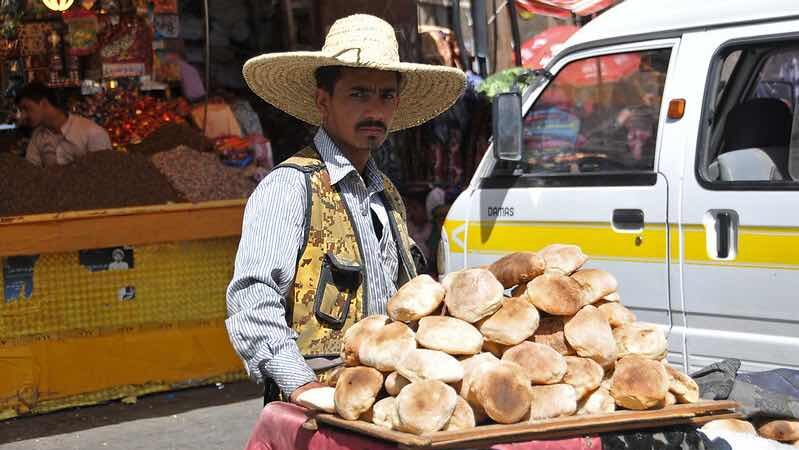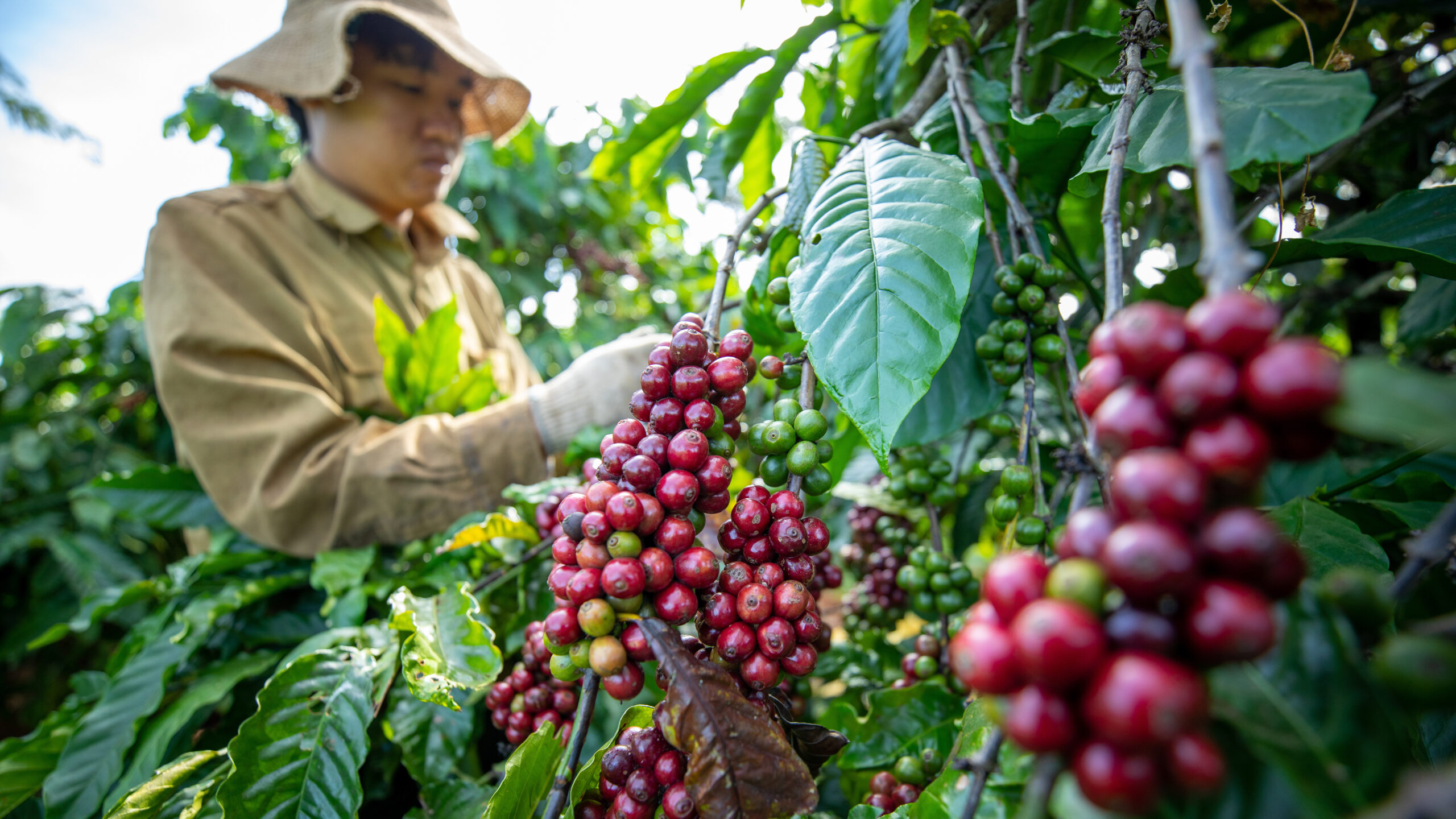The Yemen conflict, underway since early 2015, has led to an ongoing, unprecedented humanitarian emergency. Food needs far exceed current consumption levels, with 3.5 million pregnant or breastfeeding women and children under 5 suffering from acute malnutrition and up to 19 million people affected by food insecurity in 2022.
Since February, meanwhile, the Russia-Ukraine war has disrupted global supplies of grains and other key agricultural products and driven global food prices higher. Yemen depends heavily on grain imports to feed a population long teetering on the edge of famine. Maintaining wheat flowing into the country and wheat products reaching consumers through private sector importers, processors, and distributors is a critical puzzle piece for managing food security.
Both the conflict and the global market disruptions have placed extraordinary stresses on the private sector in Yemen. At a time when humanitarian efforts to address the crisis have been cut back, food importers and other private sector actors—always key to the country’s food economy—have become central to the urgent task of preventing the further growth of food insecurity. In this post, we examine the current conditions Yemen’s private sector faces as it confronts these challenges and suggest a potential way forward to address related problems.
Food imports in Yemen
In 2020, 84% of food calories consumed in Yemen were imported—the vast majority coming from grains, mostly wheat. Prior to the start of the conflict, Yemen imported about 3 million metric tons of wheat per year, primarily from Australia, Russia, Ukraine, and the United States, or about 100 kg per capita per year. Due to declines in local agricultural production, the reliance on grain imports has since grown, despite the additional hurdles it creates for importers. After an immediate drop around the start of the conflict, wheat imports reached 3.4 million tons in 2020.
Food is imported to Yemen exclusively by a small number of private sector companies and humanitarian agencies. Food imports by humanitarian agencies amounted to 0.9 million tons, mostly wheat, in 2020 and have stayed high because of the growing food crisis. The World Food Programme (WFP)—by far the largest food importer among the humanitarian agencies—aims to support nearly 13 million of the most vulnerable people (almost half of the population) with emergency food assistance in 2022. WFP distributed approximately 26% of Yemen’s total wheat imports in 2020.
Yet the costs of WFP’s food distribution scheme (currently projected at $809 million for the next six months) have proven difficult to sustain indefinitely. Due to funding constraints and global grain price increases, WFP was forced to reduce the amount of food distributed to 60% of the standard food basket portions for more than half of beneficiaries in January 2022, and again in June to 45%-55% of the standard portions for all beneficiaries.
Even the enormous scale of food distribution leaves the large majority of Yemen wheat imports supplied by the private sector. With assistance being cut back, monitoring the capability of the private sector to supply Yemeni food markets is an urgent concern.
Impacts of the Russia-Ukraine war and India’s export ban
In 2021, Yemen imported 44% of its wheat from Russia (24%) and Ukraine (20%). Russia’s invasion in Ukraine disrupted those supplies and forced a scramble by Yemen’s importers to find alternatives, with mixed results so far.
Overall, for the first eight months of 2022, wheat imports from three of the usual top four export countries to Yemen (Australia, Ukraine, and the United States) together were down by 12% compared to the same period in 2021, largely due to reduced exports from Ukraine (Figure 1). Russia—the fourth top export country until 2021—stopped reporting trade data in February 2022, so it is unclear whether any wheat from Russia was exported to Yemen since the start of the Russia-Ukraine war.
Despite those shortfalls, however, total export quantities to Yemen during the first eight months in 2021 and 2022 are similar, with the losses in 2022 largely offset by increased exports from India and the European Union.
Figure 1
Thus, India’s surprise wheat export ban in May 2022 hit Yemen particularly hard. India had become a crucial low-cost supplier contributing almost one third of wheat imports to Yemen in the period from the start of the Ukraine conflict to the export ban.
While the Black Sea Grain Initiative has partially opened shipping from Ukrainian and Russian ports, only two shipments of wheat from Ukraine to Yemen have occurred so far totaling 67,500 tons, with two further shipments in line for inspection. Shortly before expiration of the Black Sea grain export deal, the agreement was extended for three months on November 17. This extension provides crucial breathing room for getting further shipments of wheat to Yemen.
The price of the Yemen conflict
In the current global scramble to find alternative trade arrangements, the Yemen conflict has put food importers there at several disadvantages. The expiration of the United Nations-backed nationwide truce on October 2, which had held since April, is expected to weaken buyers’ negotiating position regarding internationally traded commodities and create fresh logistical challenges for discharging grain shipments and distributing grain products in Yemen.
A greater concern is higher costs—a direct consequence of the conflict—being passed on to consumers. Since the conflict began, the price of insurance for commercial shipments has increased 16-fold. In addition, there are costly delays in delivering grain products due to the conflict-era system of clearances and inspections at the port of entry and along supply routes. Add to that the costs resulting from input supply constraints and local procedures. Prices of fuel—for operating port terminal generators, flour mills, and trucks, for example—are very high, and fuel shortages are common.
The de facto separation of the country into northern and southern parts requires supplying the North by imports through the seaports of Al-Hodeidah and As-Salif on the Red Sea, and the South by imports through the seaport of Aden on the Gulf of Aden. Distribution throughout Yemen’s rugged countryside also raises costs, with higher prices seen in distant markets farther away from the main seaports and in remote areas with more complicated security situations.
Food importing companies in both North and South also face the complications of procuring foreign exchange to purchase in the international market. Each country part has separate monetary policies regarding the national currency—the Yemeni riyal (YER)—with more recent banknotes printed in the South not accepted in the North. The official exchange rate is overvalued, and importers must compete in an auction system to access foreign exchange at the Central Bank. In the South, the currency has been steadily depreciating overall while jumping unpredictably as government deficits climb and reserves dwindle amidst occasional bailouts from Saudi Arabia (Figure 2).
The private sector as a whole in both North and South Yemen also faces obstacles in dealing with the international financial system, partly because the two parts are not recognized internationally as independent territories, and less favorable financing conditions are applied across the board. A particular challenge for importers is maintaining a much-larger-than-usual reserve of working capital (in U.S. dollars, USD) for financing shipments, which often require half of the import value paid upfront.
Figure 2
A related challenge is access to credit. Ansar Allah—the de facto authorities in North Yemen (also known as the Houthis)—and their supporters are targeted by various international financial sanctions strongly supported by the United States. The group was briefly designated as a terrorist organization by the Trump administration in January 2021, a move revoked the following month by incoming President Biden. While the current sanctions are in theory more narrowly targeted at Ansar Allah leadership and accomplices, in practice international banks prefer to avoid engaging in financial transactions involving Yemen as a whole.
All of these complications put upward pressure on food prices. Since the conflict began, local retail prices for wheat flour have trended at around twice the international wheat price. In the North, authorities have attempted to control price spikes, publishing a list with enforced price ranges for essential commodities at regular intervals. While this policy may benefit consumers in the short term by limiting price fluctuations, to the degree that prices are not updated sufficiently to reflect increases in costs, these price ceilings could contribute to food shortages in lieu of higher retail prices.
Maintaining food supply chains and consumer markets
While a few large companies dominate the food import and processing sector, a network of small traders and shopkeepers handles the distribution and retail sales of grain products in Yemen. These businesses play a pivotal role in Yemen’s local economy, creating much-needed service sector jobs while also functioning as lenders for everyday essentials, including food. A recent survey of market key informants found that 64% of food vendors sell on credit to trusted customers in their communities, and most rural households heavily depend on these credits, especially for smoothing consumption of food purchases during periods of cash shortages. Approximately half of poor households’ weekly food purchases are made using credit rather than cash. The demand for credit extends up the value chain. Wholesalers and other food distributors often buy on credit from importers and processors and in turn extend credit to these local retailers. While the provision of credit is vital for food security at the household level, it also implies challenges for liquidity in a context where access to financing is limited.
A way forward
One prong of any approach to address Yemen’s current food crisis must be providing adequate funding for the humanitarian response to avert famine and reduce hunger. But it is also clear that, with humanitarian aid under pressure, making room for the private sector to operate effectively is key for food security in the country. The Hayel Saeed Anam (HSA) Group—Yemen’s leading grain importer and processor of nearly all imported wheat—has called on international organizations and governments to provide emergency support for importers to avert a potential famine. Proposals include giving Yemen’s wheat importers priority access to wheat supplies, providing them with special import financing conditions, and guaranteeing payments for shipments for a standardized 60-day term.
As long as the private sector can ensure that food remains available in local consumer markets, the international community can scale up cash assistance programs—these require less infrastructure than food distribution or food voucher programs and have been shown to be effective also under conflict conditions in Yemen. From the governments in North and South Yemen, urgent action in macroeconomic policy is needed to temper inflation and restore confidence in the Yemeni currency.
Yemen faces the continuing risk of soaring hunger and malnutrition amid both conflict and global economic uncertainty. Direct food aid and other humanitarian assistance is one prong of the response, but most wheat still reaches households through private importers and distribution networks. The international community can also take actions such as providing poor households with aid in the form of cash and take concrete actions to buttress the crucial role of the private sector.
Sikandra Kurdi is a Research Fellow with IFPRI's Development Strategy and Governance Division (DSGD) based in Cairo; Olivier Ecker is a DSGD Senior Research Fellow; Joseph Glauber and David Laborde are Senior Research Fellows with IFPRI's Markets, Trade, and Institutions Division. Opinions are those of the authors.







